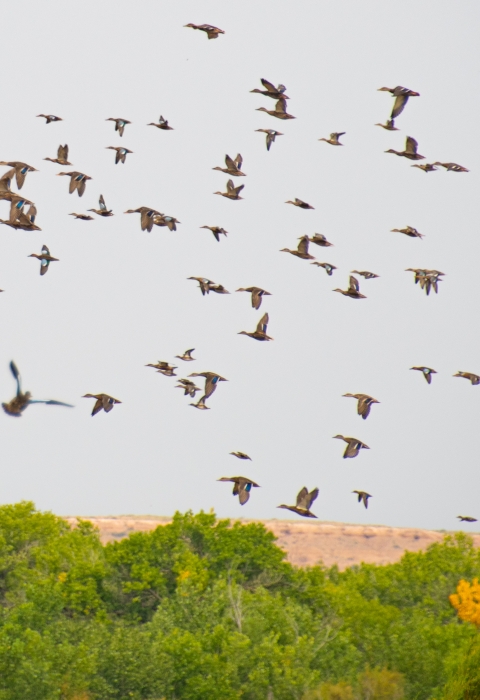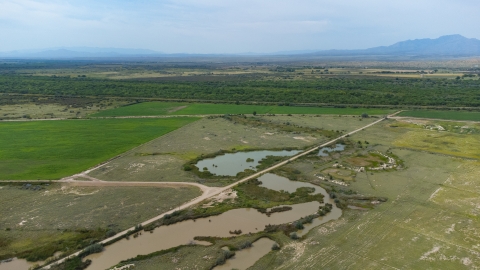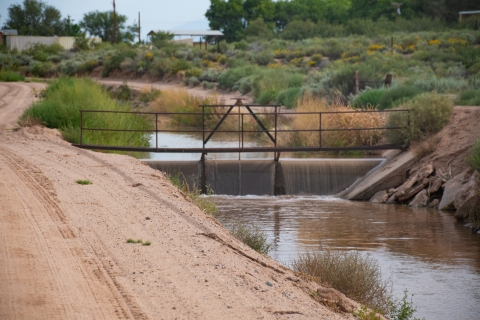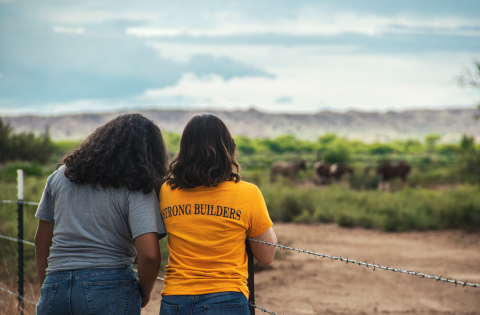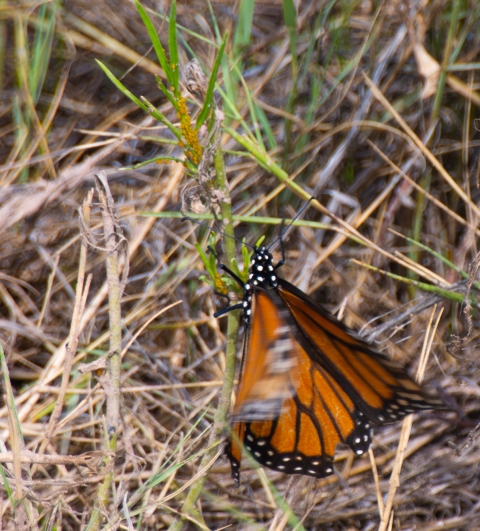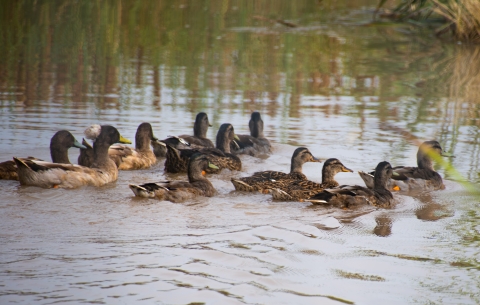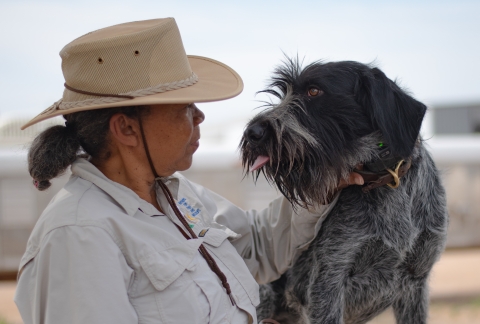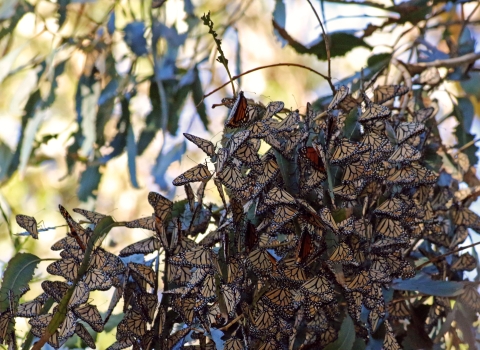Running down the center from north to south of the fifth largest U.S. state — New Mexico — flows its largest and most important waterway: the Rio Grande. Known as the Rio Bravo to neighboring old Mexico, one might interpret the name, (meaning great or brave) as a testament to the courage the river needs to endure the arid and unforgiving extremes of the Chihuahuan Desert.
Its steady flows have nourished the crops of many cultures spanning millennia; from the Pueblo before European contact, then to Spanish farmers in the 1600s then onto Mexico in the early 1800s. According to the Albuquerque Historical Society, in the mid-1800s when New Mexico became part of the U.S., treaties kept many of those centuries-old riverside agricultural plots intact, along with their water rights, that stand to this day.
“They call New Mexico The Land of Enchantment for a reason. It is enchanting, and it's so versatile and different and so are the people, and these lands have been part of family legacies for many generations,” said New Mexico Partners for Fish and Wildlife (PFW) Biologist Gwen Kolb. Now retired from the U.S. Fish and Wildlife Service, she worked exclusively with private landowners and tribes to help them manage their lands to enhance federal trust species' habitat.
Since people began farming with the precious water resources of the American Southwest thousands of years ago, it’s taken a toll on the rare desert wetland habitats of the region. These effects have become more pronounced in recent decades due to increased agricultural use and drought caused by climate change. New Mexico is unique in its community-managed irrigation canals, called acequias, beginning in the 17th century, many remain in place today. What is now riparian riparian
Definition of riparian habitat or riparian areas.
Learn more about riparian farmland was once floodplains and wetlands.
“There are historic wetlands all along the edges of this river, and they're usually privately owned,” said Kolb. “When landowners give me a call and say, ‘I've got this wet spot on my land,’ I do my homework, get out the historical maps, and we can see it was once a wetland or floodplain, all the way from the river channel out to the mountain range. Often, we can just add water. The seed banks are still there. Sometimes the soil is too salty, so dilution is the solution. The plants come back, and they bring back the wildlife.”
Nestled alongside the meandering Rio Grande near Bernardo lays the New Mexico Boys and Girls Ranch. Since 1944, it’s served as a sanctuary for at-risk youth ages 12 to 18, offering them solace amidst central New Mexico’s rugged beauty. The Ranch’s wetland manager began working with Kolb in 2016.
“The Service helped us fund a well to maintain 50 acres of monarch butterfly habitat,” said Keith Philippi, a retiree who volunteers in ranch operations at the Ranch as the wetland manager. “The monarch plot is a public service and is a good example to the kids. The Ranch also raises horses for equine therapy and grows feed for cattle and other animals the youth handle through 4-H.”
Philippi also began consulting with PFW on how to attract more waterfowl to their land. He and his crew began shaping the land and adding water to restore some of those historic wetlands to benefit ducks, which are federally protected migratory birds.
“When I first got here the property was covered in invasive salt cedar, and there was very little wildlife,” said Philippi. “Now that we’ve added ponds, we’ve had a tremendous diversity of wildlife begin to show up including several duck species such as mallards, pintails, Gadwalls and cinnamon teal. Every year we get hundreds of Canada geese nesting here, we have many nesting great blue herons, and we get several shorebird species as well.”
As a potential income source, the Ranch began opening the land up to hunting dog trainers. Along with the wetland improvements, the Ranch also raises game birds and also has some hilly upland areas, making the Ranch ideal for versatile hunting dog training.
The North American Versatile Hunting Dog Association (NAVHDA) held their annual Invitational at New Mexico Boys and Girls Ranch. This was significant because in the past, the lack of wetlands in the arid western states has meant that NAVHDA only had events in the more humid eastern states.
“You might ask ‘Why would Partners get involved with a hunting dog organization?’” said retired PFW Biologist and NAVHDA Judge Bridgett Nielsen. “Hunters and NAVHDA members are buying licenses, guns, and ammo, and Duck Stamps in particular. All of those pieces play a role in the bigger picture of conservation. I'm so excited to see that the Partners program has gotten involved here and helped this event become possible in the West.” Manufacturers of firearms, ammunition, and archery gear have funded conservation since the passage of the Pittman-Robertson Act in 1937.
Nielsen spent her 27-year career with the FWS restoring habitat in the western states and fell in love with waterfowl and upland hunting when she bought her first versatile hunting dog, a vizsla (Hungarian pointer) named Jake. She spends much of her time volunteering with NAVHDA and training dogs. When she happened to spot PFW logos at the Ranch during the 2022 Invitational, she approached Kolb.
People's passion for waterfowl hunting has fostered the restoration of these historic wetlands, which offers benefits beyond duck populations. According to Kolb, 75 percent of all wildlife species depend on wetlands during their life cycle. Hunting surged during the pandemic, recruiting new blood to the ancient tradition. This increased interest in wildlife populations offers a glimmer of hope as development and climate change climate change
Climate change includes both global warming driven by human-induced emissions of greenhouse gases and the resulting large-scale shifts in weather patterns. Though there have been previous periods of climatic change, since the mid-20th century humans have had an unprecedented impact on Earth's climate system and caused change on a global scale.
Learn more about climate change continues to reduce wetland acreage nationally.
“Water is the limiting factor in this state, and we need these landowners’ help to get all the water and land resources we can to enhance wildlife habitat,” said Kolb. “We need this habitat to carry on these values to this new generation of hunters. They're teaching their youngsters, ‘This is the kind of land you hunt on.’”
Kolb retired just months after this interview took place.
“My legacy is the work I’ve done with these landowners and seeing how they understand the system now. They're teaching other folks and telling them how it works — because you can't have restoration without education,” Kolb added. “You've got to find that nexus of how it's going to be for me and for the next generation. These landowners understand what this means. They’re putting it on the ground and keeping it on the ground. This is valuable, and they understand how valuable it is.”
Authors note: Gwen Kolb retired from the Service in 2022.
Video version of this story: https://www.youtube.com/watch?v=WK_IeFCoLO8
